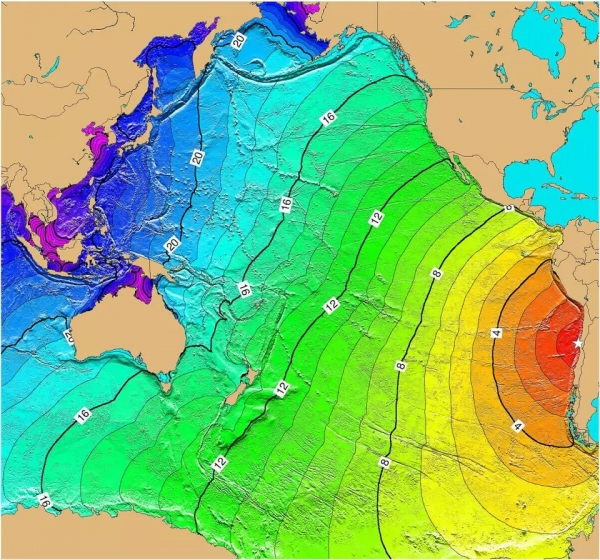
 Data Structure
Data Structure Networking
Networking RDBMS
RDBMS Operating System
Operating System Java
Java MS Excel
MS Excel iOS
iOS HTML
HTML CSS
CSS Android
Android Python
Python C Programming
C Programming C++
C++ C#
C# MongoDB
MongoDB MySQL
MySQL Javascript
Javascript PHP
PHP
- Selected Reading
- UPSC IAS Exams Notes
- Developer's Best Practices
- Questions and Answers
- Effective Resume Writing
- HR Interview Questions
- Computer Glossary
- Who is Who
What is the largest earthquake in the world?
An earthquake is defined as the sudden shaking of the Earth's surface. Earthquakes are caused by the collision of tectonic plates in the Earth's crust. These plates ride over each other when instability is created in the crust due to the release of energy from the Earth's core.
There are large earthquakes and small earthquakes. Earthquakes are measured using an instrument called Seismometer. The magnitude of an earthquake is represented on the Richter scale. On the scale, 3 or less is scarcely noticeable, and magnitude 7 or more causes damage over a wide area.

The Great Chilean earthquake also known as the 1960 Valdivia earthquake is the largest and most powerful earthquake recorded till date with a magnitude of 9.4-9.6. This occurred in South America near Lumaco, approximately 570 kilometers south of Santiago, with Valdivia being the most affected city. This tremendous earthquake triggered various other natural disasters like
Land Slides
Landslides occurred in the steep valleys of the southern Andes as a result of this earthquake. As most of the areas were uninhabited these landslides did not cause many fatalities or significant economic losses.
Tsunami
The Earth Quake tremor caused localized tsunamis that severely battered the Chilean coast, with waves up to 25 meters. The main tsunami raced across the Pacific Ocean and devastated Hilo. The main tsunami crossed the Pacific Ocean at a speed of several hundred km/h. Waves as high as 10.7 meters were recorded 10,000 kilometers from the epicenter, and as far away as Japan and the Philippines.
Rinihuazo Flood
The landslides west of Tralcán Mountain, caused by the earthquake blocked the outflow of Riñihue Lake. Riñihue Lake is the lowest of the Seven Lakes chain and receives a constant inflow from the Enco River. Riñihue Lake is the lowest of the Seven Lakes chain and receives a constant inflow from the Enco River. The blocked San Pedro River, which drains the lake, passes through several towns before reaching the city of Valdivia near the coast. Because the river was blocked, the water level of the lake started to rise quickly. This potential disaster would have violently flooded all the settlements along the course of the river.

The death toll and monetary losses arising from this widespread disaster are not certain. Various estimates of the total number of fatalities from the earthquake and tsunamis have been published, ranging between 1,000 and 6,000 killed. Different sources have estimated the monetary cost ranged from US$400 million to 800 million at that period of time.

